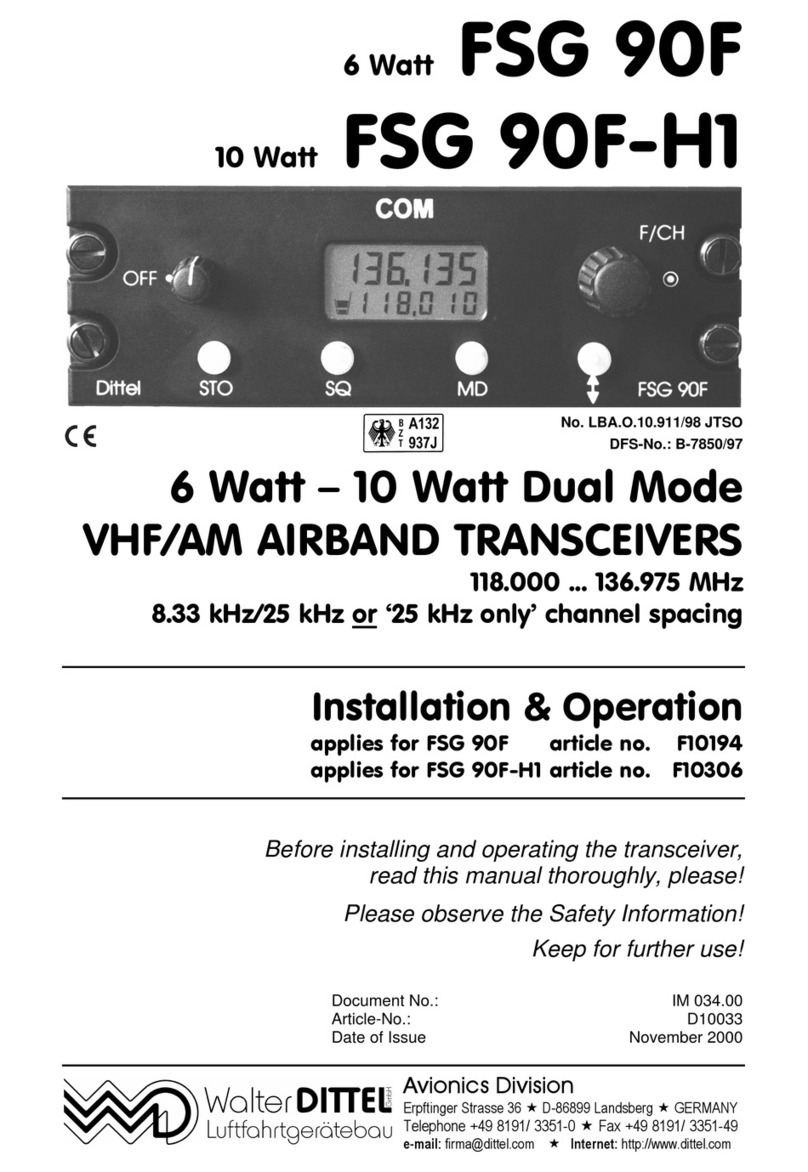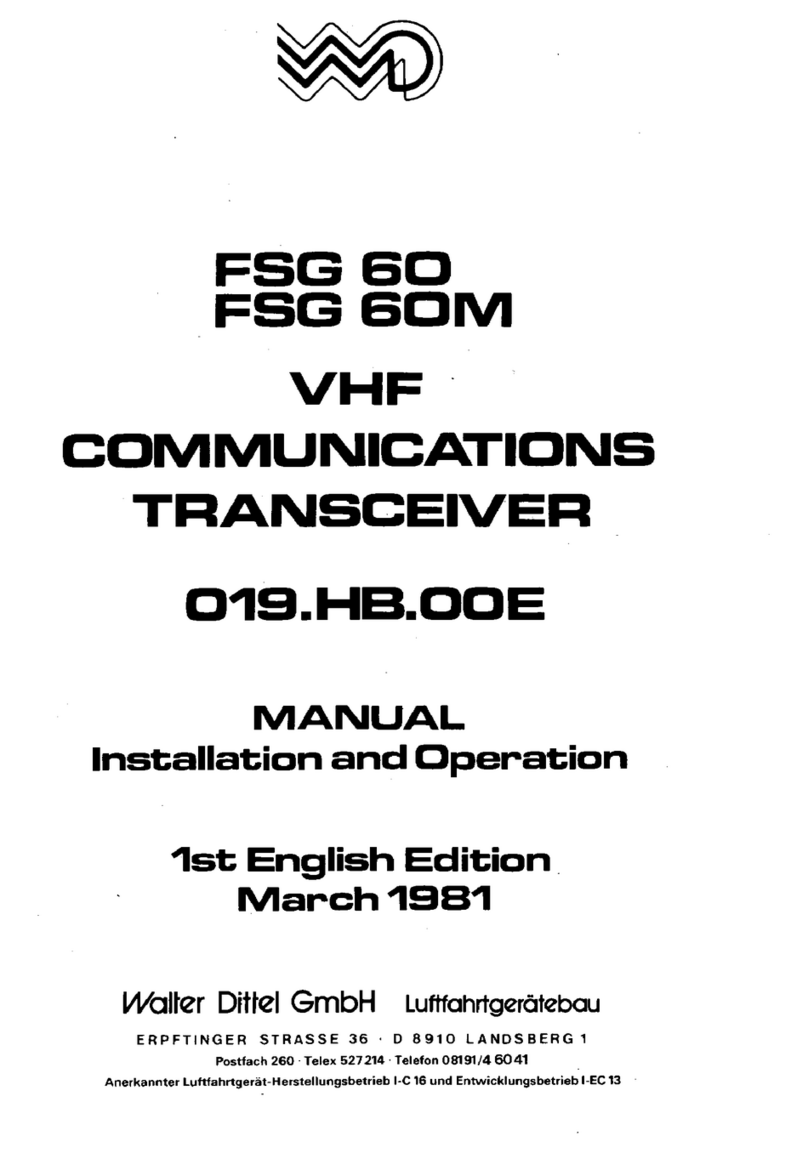
FSG 70/FSG 71M
OPERATION MANUAL
Reprint July 1998 Page iii
W. Dittel GmbH
Table of contents
Paragraph Page
Warranty - Copyright - Service ................................................................................................... ii
Table of contents....................................................................................................................... iii
List of illustrations ...................................................................................................................... iv
List of valid pages...................................................................................................................... iv
Section I, Safety Information .................................................................................... 1-1
1.1 Used Symbols..............................................................................................................1-2
Section II, General Information................................................................................. 2-1
2.1 Introduction ..................................................................................................................2-1
2.2 Application ...................................................................................................................2-1
2.3 Brief Description...........................................................................................................2-2
2.4 FSG 70-System Technical Data...................................................................................2-3
2.4.1 General Data ........................................................................................................................ 2-3
2.4.2 Receiver Electrical Data ....................................................................................................... 2-4
2.4.3 Transmitter Electrical Data................................................................................................... 2-5
2.4.4 Additional features................................................................................................................ 2-5
2.5 Units and Accessories supplied ...................................................................................2-6
2.6 Accessories required, but not supplied.........................................................................2-6
2.7 Summary of the FSG 70-System .................................................................................2-7
Section III, Installation............................................................................................... 3-1
3.1 General ........................................................................................................................3-1
3.2 Pre-installation Check ..................................................................................................3-1
3.2.1 Matching the Microphones ...................................................................................................3-2
3.2.2 Audio Sidetone ..................................................................................................................... 3-2
3.3 Mechanical Installation.................................................................................................3-4
3.3.1 Installation of the Transceiver .............................................................................................. 3-4
3.3.2 Influence on Compass ......................................................................................................... 3-4
3.3.3 Antenna Installation.................................................................................................................. 3-7
3.4 On-board Wiring ..........................................................................................................3-8
3.4.1 General Instructions for On-Board Wiring............................................................................3-8
3.4.2 Connection of the microphones ......................................................................................... 3-12
3.4.3 Intercommunication (IC)..................................................................................................... 3-12
3.4.4 Speaker/Phone connection ................................................................................................ 3-12
3.4.5 AF-External Input ............................................................................................................... 3-12
3.4.6 Illumination of the Frequency Display................................................................................. 3-13
3.4.7 Connection to 28Vdc aircraft bus .......................................................................................3-13
3.5 Post Installation Check...............................................................................................3-14
3.5.1 Testing on the Ground with the Engine Off ........................................................................3-14
3.5.2 Testing on the Ground with Engine Running...................................................................... 3-14
Section IV, Operation ................................................................................................ 4-1
4.1 Control Functions.........................................................................................................4-1
4.2 Operating Instructions..................................................................................................4-2
4.3 Programming the Channel Frequency Memory (FSG 71M only)..................................4-3
4.4 Recall of Stored Frequencies.......................................................................................4-3
4.5 Battery Check ..............................................................................................................4-3
4.6 Emergency Operation ..................................................................................................4-4
4.7 Squelch Function (SQ).................................................................................................4-4
4.8 Intercommunication (IC)...............................................................................................4-4
4.9 Audio External..............................................................................................................4-4
Appendix A, Certificate..............................................................................................A-1





























